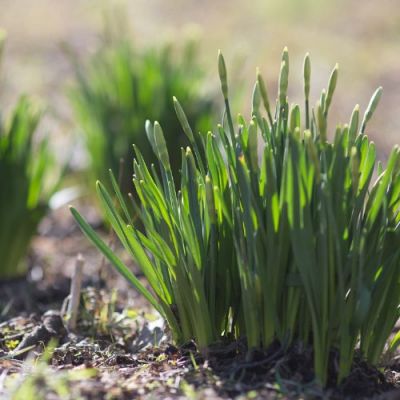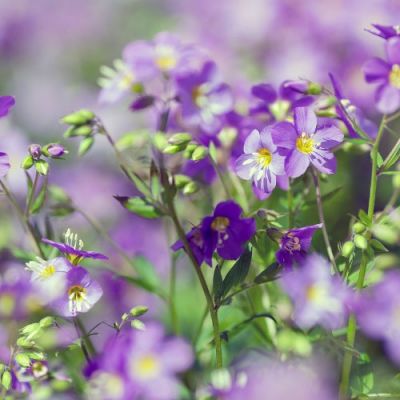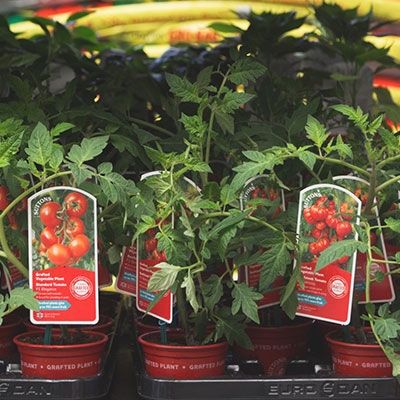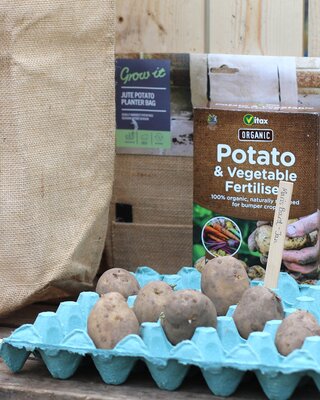08.2025 - August Gardening Tips
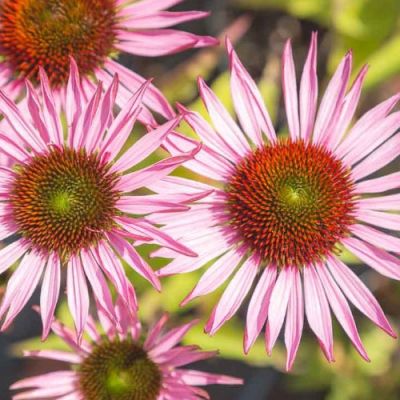
For many of us, the month of August can dictate the start of the slide into the off-season; as summer exhales and momentum begins to slow. This month really is about enjoying your garden at its peak, so please do take the time out to relax in the garden (even if it is between showers!).
It's so easy to feel like giving up on your garden this month but fight the temptation! Summer may be winding down but there's still lots of jobs that you can do to prolong your flower and vegetable gardens. Besides, summer may still return. Here's hoping!
Keep on Top of Watering
If like many of us, you're setting off overseas in search of a lesser-spotted sun this month then do make sure that you give your garden a thorough watering before you go. Group plants in containers/pots together, this will create more shade and they will develop their own ecosystem requiring less water.
If you can't find a neighbour to look after your plants then there are several drip watering systems available here at Beetham or you could make your own from a bucket of water and some string. Just search online for 'wick watering methods' - the basic premise is that you set up a bucket of water with a wick (string works well) - one end will be placed in the bucket and the other buried into the soil of the plant you wish to water. Over time the capillary action that takes place will ensure that your plants receive water as they need it.

Tomatoes & Fruit
Tomato plants and other fruits will need feeding regularly (once every two weeks) to ensure that you get the optimum fruit. If growing tomatoes, you should be beginning to see fruits ripening toward the end of this month. If you haven’t already, then pinch out the top of your tomato plants to stop them producing more trusses (not applicable to tumblers). The ideal number of trusses you should have is about 4-6 but this will obviously depend on the variety you are growing.
It's important to keep an eye out for blight and blossom end rot at this time of year. Blossom end rot is where the bottom of your fruits will start to develop a brown patch; this occurs when there is a lack of calcium or in extremely wet conditions. Blossom end rot is caused mainly by irregular watering, whilst fruits that have developed blossom end rot cannot be saved, subsequent fruits can; make sure that you water regularly and never allow the soil to completely dry out. It’s best to water twice a day in hot conditions than to water once a day in larger quantities. Regularly watering will also prevent tomatoes from splitting. Keep removing yellow leaves that appear further down the plant – this is symbolic that the leaves are no longer functioning and are past their best.
Install a Thermometer
As gardeners we do tend to develop an obsession with the local Met office website or weather channels, mainly because so much depends upon weather and air temperature that this information is invaluable. As great as the Met office is though, it can't tell you exactly what's happening in your own garden; with this in mind it's quite surprising that many of us don't actually have a garden thermometer installed. As the evenings turn a little cooler, a garden thermometer can become an extremely valuable tool.
There are a few things to think about before installing a thermometer in your garden, especially if you require an accurate temperature reading.
When installing a thermometer it's important that you position it in a shaded area out of direct sunlight; a north facing wall is ideal. Make sure that there's good airflow around it and that it's raised roughly 4-6ft above the ground.
Late Summer Colour
Towards the last weeks of August, your garden can begin to look a little tired (this is quite normal) due to the low water table and the natural lull that often occurs between summer and autumn flowering. If you can't stand to turn a blind eye whilst this transition takes place then there are many plants that will provide an abundance of colour at this time of year.
- 1. Agapanthus Silver Moon - a clump forming perennial with narrow strap like variegated leaves and blue flowers in summer through into August. We have lots of varieties of other Agapanthus available.
- 2. Crocosmia Carmine Brilliant - red orange flame flowers that are a must have in the late summer border. Other varieties also available.
- 3. Eucomis Sparkling Rose - a bulbous perennial with broad, glossy, fleshy, strap-shaped, burgundy red leaves. Erect stems of pink, tightly packed, starry flowers topped with a rosette of leaves like a pineapple. Just coming into bloom and will last well into the autumn.
- 4. Anemone (our plant of the month) - a spreading perennial with dark green leaves and pretty single pink flowers, whose alternate petals are paler.
- 5. Leucanthemum Superbum Shapcott Gossamer - Large ragged white petalled white flowers from July through until November. Other varieties also available.

Daisies and Dahlias
Daisies and Dahlias are great at this time of year and there are so many different varieties to choose from; these cheerful flowers are just coming into bloom and we have many that will last well into the colder months.
Rudbeckia are one of our favourite types of daisy due to their durability and ease of growth. They have small flowers consisting of tubular petals, usually with a chestnut brown centre. If you like daisies or dahlias then be sure to come and have a look at our huge collection - guaranteed to add some much needed colour at this time of year.
August is also a superb time for echinacea, which are currently flowering in abundance. They are strong stemmed large daisy like flowers that are extremely hardy and will look great in any garden.
Planning Ahead
This month presents a great opportunity to get a head start on next year's gardening plans. Now's the time to note any gaps/congestion in your borders that you'll want to rectify later in the season ahead of next year and to start a shopping list for autumn bulbs. Towards the end of the month you can start sowing hardy annuals and plan next year's colour.
August is a great time to reflect on the garden; get a sketch pad and draw out a rough design of how your garden looks now and how you would like it to look next year. You don't have to be an artist but it doesn't hurt to have a rough idea of what you've planted where, and where next season's plants are going to go. This will not only help you organise where colour will be but will prevent you from digging up bulbs etc that you may have forgotten about planting earlier (we've all done it!). This is also a great time to take photographs of your garden at its peak and to note any container combinations that you may wish to repeat.

Don't let the Garden Go This Month
There's still plenty that we can sow and grow:
Flowers:
Winter flowering pansies can be sown now for colour over the cooler months and violas can be sown for over wintering to provide early spring colour.
Vegetables:
There are also lots of vegetables that can be sown now:
Winter lettuces can be sown ready to plant out at the end of the month. If you have a greenhouse then dwarf runner beans can be sown now for an autumn crop. Winter radishes, winter hardy spring onions, swiss chard, pak choi, turnips, spinach, spring cabbages can all be sown this month. Parsley, chervil, coriander can all be sown in seed trays to grow under glass through the cooler months.
Plant out:
Summer/autumn cauliflowers, winter cabbages and kale.
Gardening Jobs For This Month
- Fruit and vegetable plants will need watering daily in warm or windy weather - don't underestimate the wind. If unsure it’s best to push your finger into about an inch of the soil and see if it’s moist or not.
- Pick peppers, tomatoes and cucumbers to encourage the development of further flowers.
- Pick gooseberries, currants, strawberries and other fruits.
- Harvest onions sown last autumn.
- Keep camellias and rhododendrons well watered, this will ensure that next year’s buds develop well.
- Lilies and top heavy dahlias will need staking to prevent wind damage; deadhead to ensure better displays next year.
- Water indoor cyclamen after their summer rest in order to encourage new growth.
- Plant prepared hyacinth bulbs in vases.
- Now’s a great time to collect seeds. Place in a bag, label and store in a dry, cool, place. The shed or a dedicated draw is ideal.
- Deadhead roses toward the end of the month unless you wish for them to form autumn hips.
- Take cuttings from shrubs including but not limited to; honeysuckle, ivy, hydrangea, potentilla and rosemary.
- Ensure the greenhouse is well ventilated, consider shading with blinds if your greenhouse is getting too hot
- Damp the greenhouse down if temperatures increase, this will provide moisture and prevent red spider mites.
- Keep pinching out the side shoots of tomatoes – regular watering/feeding will prevent the fruits from splitting. Remove leaves that have yellowed or don’t look healthy. Check regularly for aphids, whitefly and red spider mite.
- Keep on top of weeding, whilst weeds will grow slower now, it’s a good idea to hoe borders regularly, especially in sunny weather.
- Trim hedges.
- Scoop weed from ponds to prevent algae bloom and treat if necessary. Top up water levels if required.
- Raise the height of the mower - keeping your grass that little bit longer will prevent the summer sun from scorching it.
- Water fruit to increase your yields and then cover with a mulch to retain the moisture.
- Plums apples and pears with heavy laden branches will need supporting now.
- Spray tomatoes and potatoes with Bordeaux mixture to prevent blight.
Cutting back
- Lavender can be trimmed back once it’s finished flowering.
- Perennials that have faded or are past their best can be cut back to keep your borders tidy.
- Cut back herbs to encourage fresh tasty leaves that can be harvested before winter arrives.
- Clematis can occasionally get ‘clematis wilt’ symptoms include wilting leaves and discolouration of the stem. The best thing is to cut out infected parts of the plant and dispose of them accordingly. Don’t put them on your compost heap as you could then infect your compost.
Pruning
- Summer flowering shrubs can be pruned once they have finished flowering.
- Prune out side shoots of Wisteria.
- Prune climbing roses once they’ve finished flowering (unless they’re repeat bloomers).
- Cuttings of perennials like Fuchsia can be taken now to propagate for next year.
- Prune out fruited canes of raspberries.
- Prune out the oldest branches of blackcurrant.
Later this Month
- Harvest young marrows.
- Hang wasp traps in fruit trees.
- Thin out plums.
- Pick early apple varieties.
- Sow parsley.
- Trim leaves from strawberries that have finished fruiting.
- Check sweetcorn to see if it's ripe.
- If you haven’t already pinched out the top of tomatoes then we would highly recommend doing so now as flowers that have set are not likely to ripen in time. Note: this doesn't apply to tumbling tomatoes.

